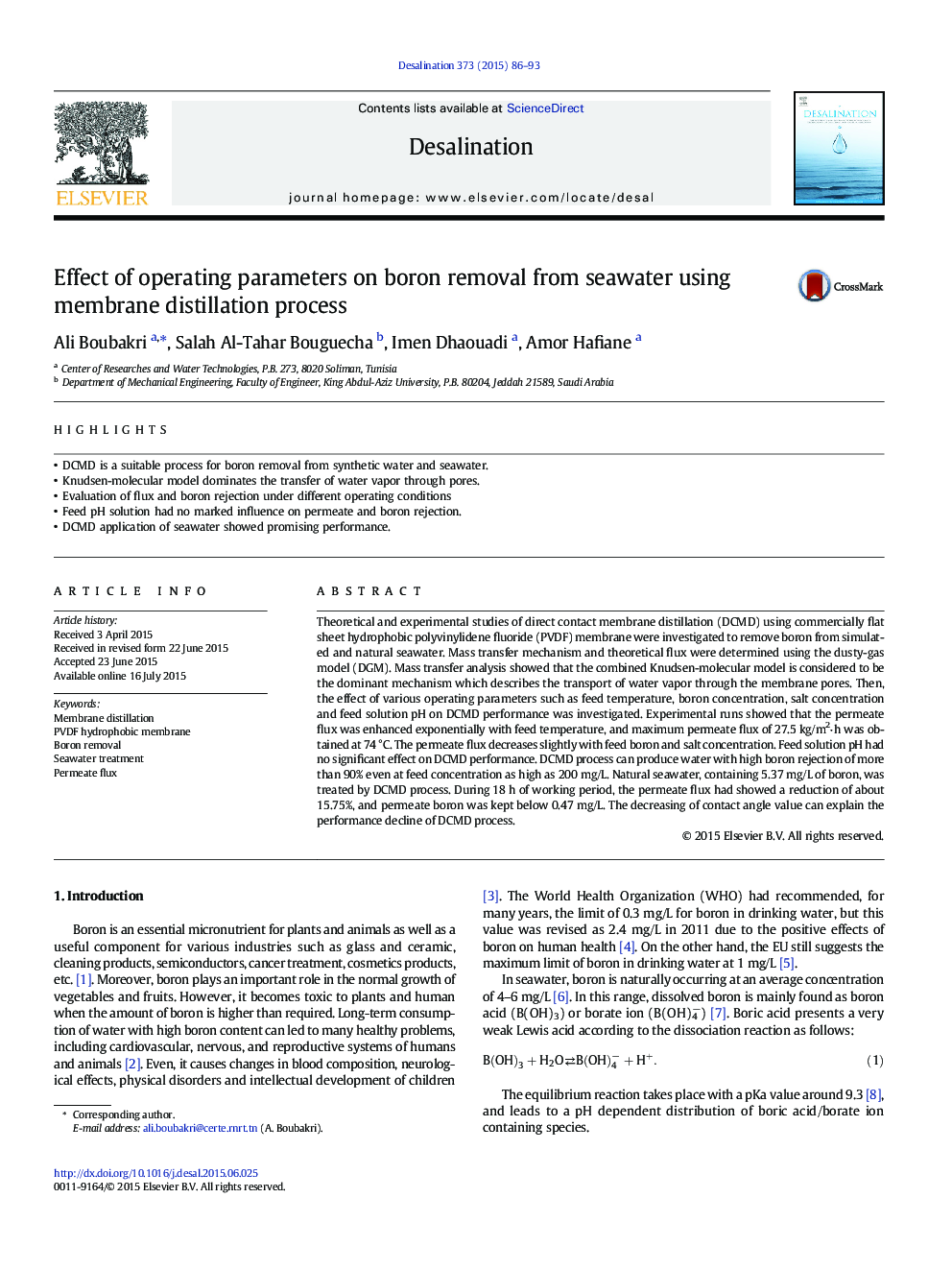| Article ID | Journal | Published Year | Pages | File Type |
|---|---|---|---|---|
| 623051 | Desalination | 2015 | 8 Pages |
Abstract
Theoretical and experimental studies of direct contact membrane distillation (DCMD) using commercially flat sheet hydrophobic polyvinylidene fluoride (PVDF) membrane were investigated to remove boron from simulated and natural seawater. Mass transfer mechanism and theoretical flux were determined using the dusty-gas model (DGM). Mass transfer analysis showed that the combined Knudsen-molecular model is considered to be the dominant mechanism which describes the transport of water vapor through the membrane pores. Then, the effect of various operating parameters such as feed temperature, boron concentration, salt concentration and feed solution pH on DCMD performance was investigated. Experimental runs showed that the permeate flux was enhanced exponentially with feed temperature, and maximum permeate flux of 27.5 kg/m2â h was obtained at 74 °C. The permeate flux decreases slightly with feed boron and salt concentration. Feed solution pH had no significant effect on DCMD performance. DCMD process can produce water with high boron rejection of more than 90% even at feed concentration as high as 200 mg/L. Natural seawater, containing 5.37 mg/L of boron, was treated by DCMD process. During 18 h of working period, the permeate flux had showed a reduction of about 15.75%, and permeate boron was kept below 0.47 mg/L. The decreasing of contact angle value can explain the performance decline of DCMD process.
Related Topics
Physical Sciences and Engineering
Chemical Engineering
Filtration and Separation
Authors
Ali Boubakri, Salah Al-Tahar Bouguecha, Imen Dhaouadi, Amor Hafiane,
